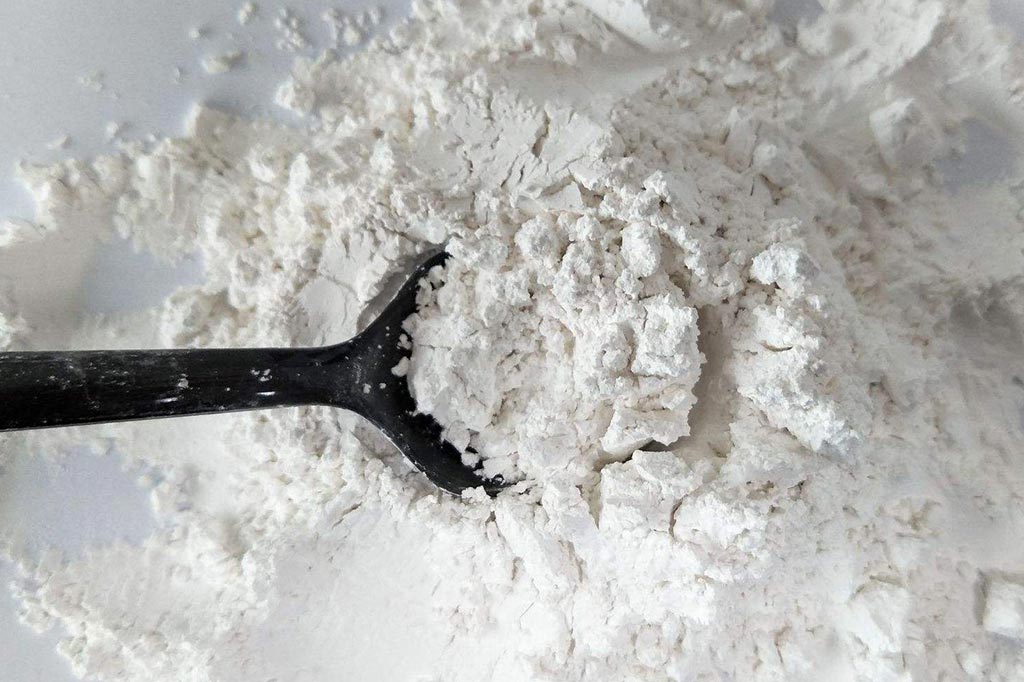Surface modification of nano calcium carbonate
Nano calcium carbonate is a new type of ultrafine solid powder material developed in the 1980s, and its particle size is between 0.01 and 0.1 μm. It is precisely due to the ultra-fineness of nano calcium carbonate particles that have produced characteristics that ordinary calcium carbonate does not have, so nano calcium carbonate is widely used in various fields.
Nano calcium carbonate has a 50-year history of development and is widely used in various fields.
| Nano calcium carbonate | Purpose | Performance improvement |
| Plastic | Good compatibility with resin, improve the rheological properties of products, etc. | |
| Papermaking | Improve the bulk density, apparent fineness and water absorption of paper. | |
| Rubber | Reinforce, fill, color, improve the processing technology and product performance. | |
| Paint | Improves the thixotropy of the blue system, the adhesion of the high-choice paint, the scrubbing resistance, and the stain resistance. | |
| Other | In the feed industry, it can be used as a calcium supplement to increase the calcium content of feed. |
Because nano calcium carbonate has the characteristics of large surface energy, low dispersibility and hydrophilic surface, it is incompletely dispersed in organic media, and nano calcium carbonate cannot be directly used in organic media.
The purpose of nano-calcium carbonate modification is to reduce the cohesion between particles and improve its dispersibility; improve surface activity; improve compatibility with other substances; improve acid resistance; prepare nano-calcium carbonate with specific crystal shapes for use in different industries.
The modification methods of nano-calcium carbonate usually mainly adopt grafting and coupling reactions, that is, connecting certain organic groups (such as carboxyl groups, etc.), coupling agents, surfactants, etc. on the surface of nano-calcium carbonate. Commonly used modifiers include surfactants, polymers, and coupling agents.

Surfactant
The surfactant chemically adsorbs or reacts on the surface of the calcium carbonate particles to form a layer of lipophilic structure, which has good compatibility with fillers and resins, and greatly reduces the viscosity of the polymer. Commonly used surfactants are fatty acids (salts), resin acids, lignin, and anionic/cationic surfactants.
Polymer
The polymer modifies the surface of the nano calcium carbonate, which can coat the surface of the nano calcium carbonate to form a complete and dense coating layer, improve dispersibility and increase acid resistance. Commonly used polymers include acrylic acid, salts, and terpolymers.
Coupling agent
Part of the groups in the coupling agent molecules react with functional groups to form strong chemical bonds, and the other part of the groups can undergo chemical reactions or physical entanglement. With the help of the monolayer of “bridging”, the minerals and organisms can be combined. The very different materials are firmly combined. Commonly used coupling agents are classified into organosilicon series, titanium series, aluminum series, chromium series, etc. according to their core elements. The most commonly used coupling agents are titanate coupling agents and organosilanes.
Surface modification method
- Local chemical reaction modification method
The local chemical reaction modification method mainly uses the chemical reaction between the functional groups on the surface of the nano-calcium carbonate and the treatment agent to achieve the purpose of modification. The specific process is divided into two types: dry method and wet method.
The dry method is to put nano calcium carbonate powder into the modifier, and then put in the surface modifier for surface treatment after running. Dry modification is simple and easy, direct packaging, easy to transport, but the obtained powder is not uniform, suitable for coupling agents such as titanate.
Wet modification is to directly add the modifier to the nano-calcium carbonate solution for surface modification treatment. The modification effect of wet modification is good, but the process is complicated and the transportation is inconvenient, so it is suitable for water-soluble surfactants.
- High-energy modification method
The high-energy modification method is a method for surface treatment of fillers by means of plasma or irradiation treatment. The technology is complicated, costly, low production capacity, and unstable modification effect, so it is less used in industry.
- Mechanochemical method
The mechanochemical method is more effective for calcium carbonate with large particles. It can increase the active points and active groups on the surface of nanometer calcium carbonate, and enhance the effect of organic surface modifiers.
From the development trend in recent years, we make a simple prediction on the market trend of nano calcium carbonate in the future: from the situation in the past few years, nano calcium carbonate has been showing a growing trend, and in the future, it will be at a rate of 20%. Continued growth. The scale of the market will also continue to expand, and the hidden potential of the market will continue to be explored.
Article source: China Powder Network
